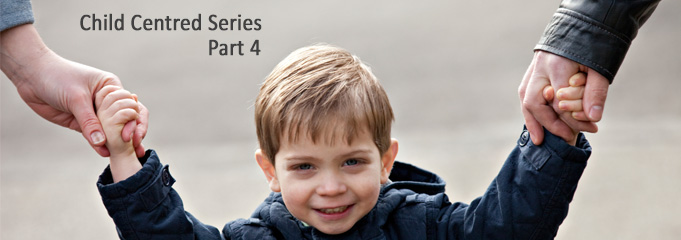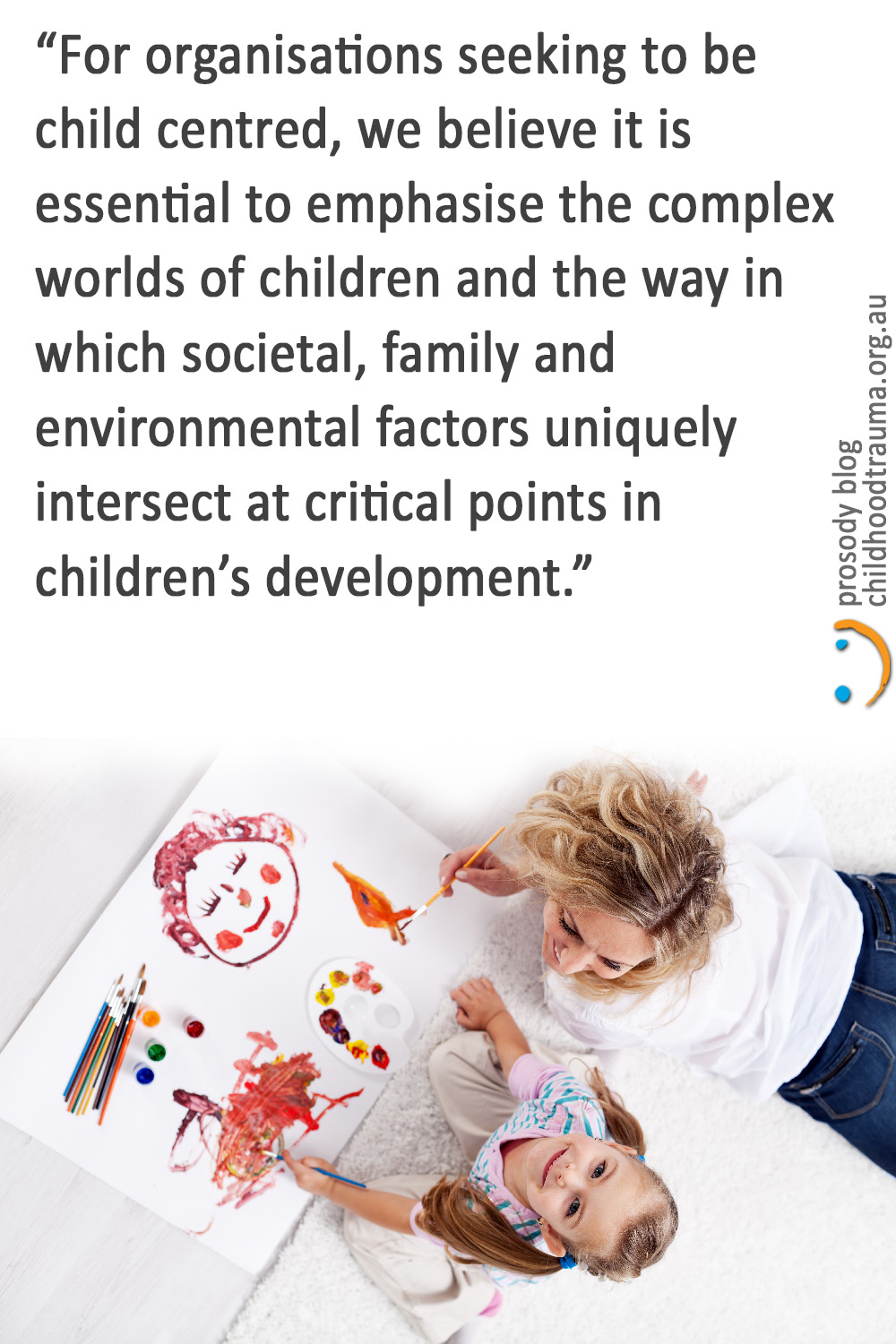
Child Centred Practice Part 4

This article was authored by Lauren Thomas,
Online Professional Community Manager
at the Australian Childhood Foundation.
In April, we began this series on Child Centred Practice, with the goals of exploring what being ‘Child Centred’ means ,and starting conversations around applications for practice (Part 1), – so far looking at recognising critical time frames (Part 2), and understanding what it means to prioritise the voice of a child (Part 3). In this, the fourth article, we will look at why an understanding of child development is important to organisations aiming to be child centred in their delivery.
Probably the most important research to inform the ‘child centred’ approach come from the major research programs funded by the UK Department of Health, which began in the 1980s after a series of high profile child death inquiries. Four distinct phases of research culminated in the development of the Looking After Children Program (LAC), which was legislated for in the UK and operates in over 90% of local authorities in England and Wales. International licenses to adapt and reproduce the original materials have been taken out in Australia, Canada, Belgium, Germany, New Zealand, Russia, Sweden and Hungary. I am confident that most of you will be at least familiar with the work.
LAC lists dimensions of the ‘life worlds of children’ which are interwoven into a detailed framework for practitioners to utilise in assessment. In our own work at the Foundation, and in our Graduate Certificate Course on Developmental Trauma, we have examined this alongside other models which seek to incorporate knowledge of child development into the assessment framework.
 For organisations seeking to be child centred, we believe it is essential to emphasise the complex worlds of children and the way in which societal, family and environmental factors uniquely intersect at critical points in children’s development.
For organisations seeking to be child centred, we believe it is essential to emphasise the complex worlds of children and the way in which societal, family and environmental factors uniquely intersect at critical points in children’s development.
The LAC framework identified 7 areas; health, education, identity, family and social relationships, social presentations, emotional and behavioural development and self-care skills. Our own model includes several domains which we perceive to be important to development and impacted by trauma. These include memory, attention, arousal, behaviour/co-ordination, regulation and learning/cognition.
However it is that you or your agency conceives of these essential areas in child development, a ‘child centred’ approach will mean respecting and seeking to understand the individuality of every child or young person, and their circumstances, across a generic set of developmental tasks[i].
The individuality, circumstances and developmental needs will determine how we think or conceive of the ‘identity’ needs of a young infant in care compared with those of a young person in their adolescence.. For example, the infant might require the location and safe keeping of identity documents, photographs of the early months of life if possible, as well as any known information about the baby’s birth family. Whereas a thirteen year old in addition to wanting to know the above, might have further needs such as access to information and possibly contact with a previously unknown birth father. These needs should always be considered alongside the age, maturity and wishes of the child.
Too often, children in care have little to understand themselves and their life. Their case files might be very large, but the ability to translate this into a meaningful sense of self is limited – even for a professional!
One way of responding to this need has been the use of Life Story Work – we will publish a blog entry looking further at this approach next month. Whichever way you approach the topic though, all attempts to help children and young people with identity formation are aided when statutory child protection agencies place importance on the systematic use of evidence based knowledge at every point with children and young people, as this will help ensure that the developmental tasks of childhood and adolescence are addressed.
 A child centred approach to policies, procedures and practice will ask the questions:
A child centred approach to policies, procedures and practice will ask the questions:
To what extent do assessment processes, actions, decisions and planning involving children and young people take into account their developmental level?
How is our considered understanding of this child’s health, education, identity, family and social relationships, social presentation, emotional and behavioural development and self-care reflected in the assessments made, decisions we are making, and recommendations we put forward?
How informed and supported are our staff to understand and integrate knowledge of child development into their work and assessments? Is training needed?
Do our policies guiding organisational activity match and support a belief that children and their needs, including developmental, are central. If not, what needs to change?
How developmentally informed do you believe your own work to be?
Below are some resources that may be of use:
- The Victorian Department of Human Services has produced a series of downloadable handouts that can be found here. These offer age appropriate advice as to the needs of children, parents and carers when trauma has occurred and ways in which children and families can be assisted in healing and recovery.
- The Victorian Department of Human Services produced a chart that looks at some of the normal developmental expectations for children, which may be of value. You can download it here.
- Age Appropriate Sexual Play and Behaviour in Children are summarised in this handout produced by Family Planning Queensland and adapted from the work of the Child at Risk Assessment Unit. You can download it here.
Do you know of any other resources that might help guide practice and inform practitioners of normative development?
If you would like support to review your policies you can contact our staff at Safeguarding Children.
If you would like to discuss training needs for your staff around child development and trauma, you can contact our staff in the Training and Professional Development Program.
[i] Principles for Child Centred Practice, Institute for Child Protection Studies.
>Take me to Prosody Homepage
